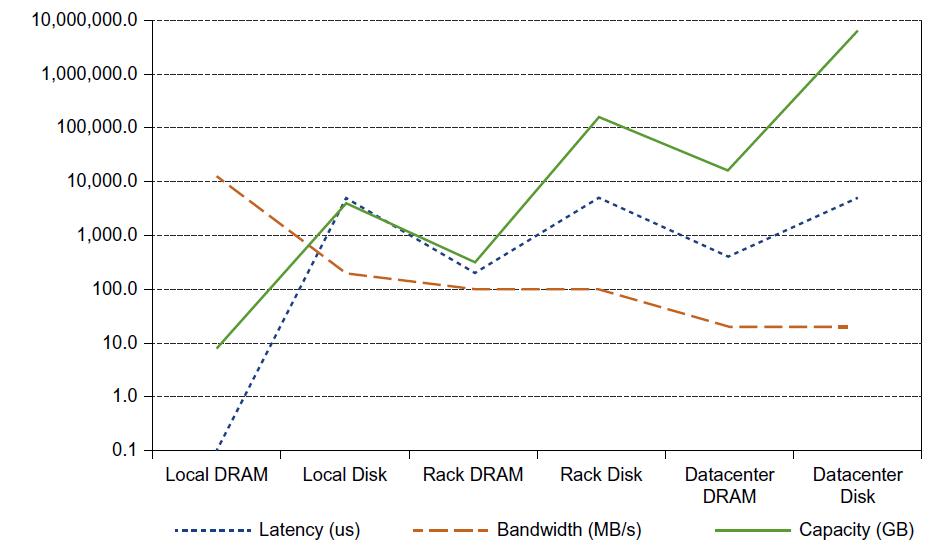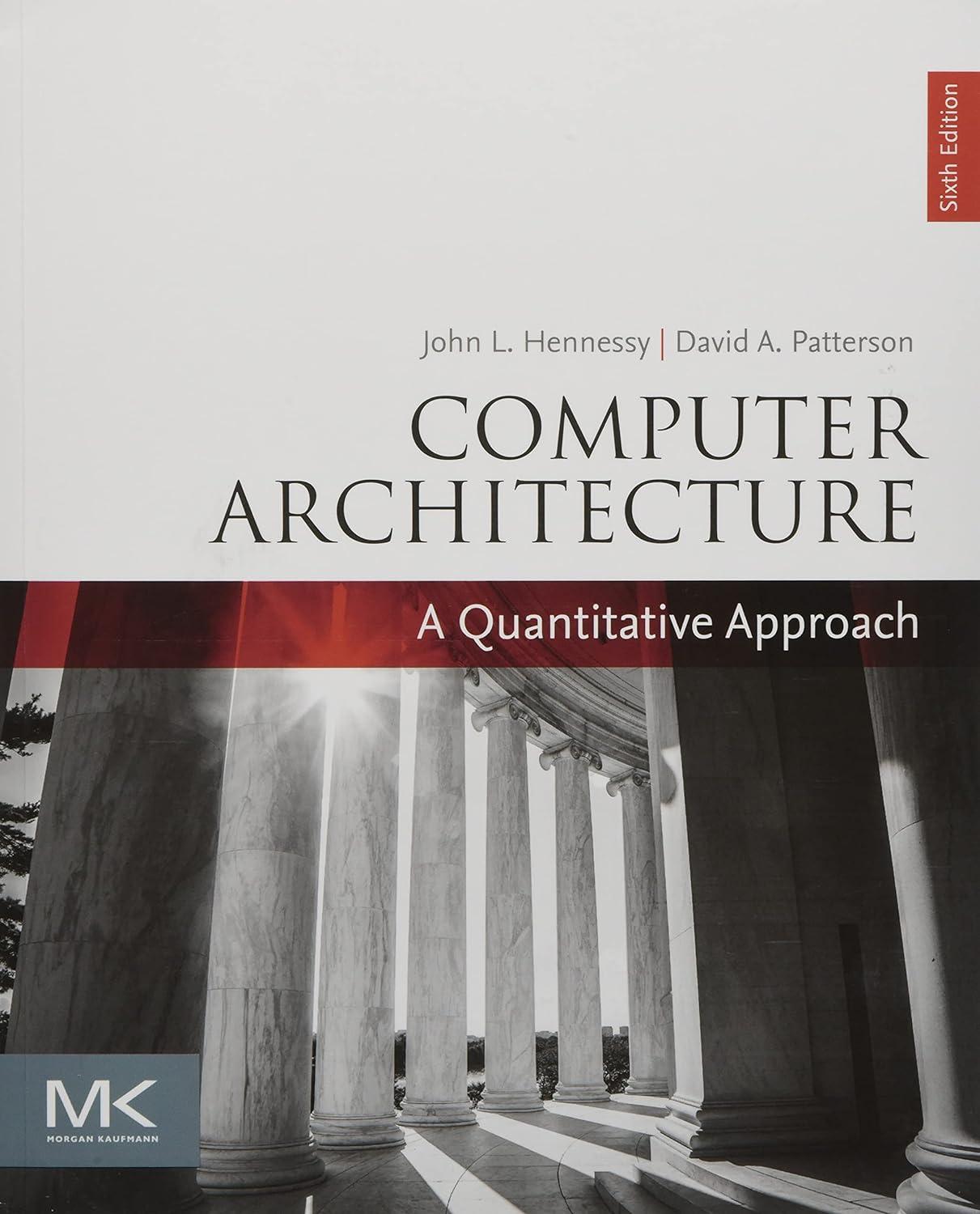One trend in high-end servers is toward the inclusion of nonvolatile flash memory in the memory hierarchy,
Question:
One trend in high-end servers is toward the inclusion of nonvolatile flash memory in the memory hierarchy, either through solid-state disks (SSDs) or PCI Express-attached cards. Typical SSDs have a bandwidth of 250 MB/s and latency of 75 μs, whereas PCIe cards have a bandwidth of 600 MB/s and latency of 35 μs.
a. Take Figure 6.7 and include these points in the local server hierarchy.
Assuming that identical performance scaling factors like DRAM are accessed at different hierarchy levels, how do these flash memory devices compare when accessed across the rack? Across the array?
b. Discuss some software-based optimizations that can utilize the new level of the memory hierarchy.
c. As discussed in “Fallacies and Pitfalls” replacing all disks with SSDs is not necessarily a cost-effective strategy. Consider a WSC operator that uses it to provide cloud services. Discuss some scenarios where using SSDs or other flash memory would make sense.
d. Recently, some vendors have discussed new memory technologies that are much faster than flash. As an example, look up the specifications for Intel 3D X-point memory and discuss how it would factor in Figure 6.7.
Figure 6.7

Step by Step Answer:

Computer Architecture A Quantitative Approach
ISBN: 9780128119051
6th Edition
Authors: John L. Hennessy, David A. Patterson





